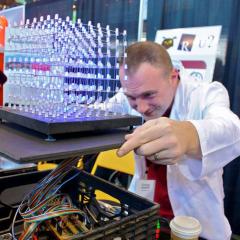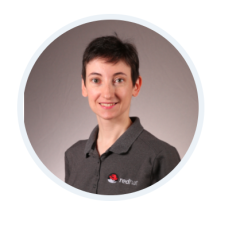Happy anniversary, Enable Architect! Celebrate with this top 10 list

Image by Philip Wels from Pixabay
On September 15, 2020, amid a global pandemic, Enable Architect launched into the world. Over the past two years, we've helped dozens of IT architects publish hundreds of articles to help enterprise architects connect and do their jobs better. We're grateful to our growing community of IT architects who are sharing their knowledge through our site.
We appreciate everyone who writes, reads, and shares articles from our site. In honor of our second anniversary, we've put together this list of Enable Architect's 10 most-read articles since September 2021. Please take a look and revisit what we have created together. And if there are topics you want to know more about—or even to write about—please reach out to us at enable-architect@redhat.com.
Top 10 articles of Enable Architect's second year
- How to improve container observability with a service mesh: To improve workload management using service mesh, it's important to look at the fine details of Kubernetes networking. Doug Smith, Fatih Nar, and Vikas Grover explain how the Multus Container Network Interface (CNI) broadens the scope and control over how pods and containers communicate within a cluster.
- How we designed a 5G Core platform that scales well: Scaling a 5G platform based on user demand can optimize infrastructure costs, accelerate microservices and cloud adoption, and get ideas to market faster. Anca Pavel, Fatih Nar, Federico Rossi, and Mathias Bogebrant explain how they did it using Kubernetes.
- 3 approaches to init containers in Istio CNI compared: Service mesh is a rapidly evolving area that has not addressed networking well because it is highly environment-specific and often requires manual intervention. Doug Smith and Fatih Nar compare istio-init, istio-cni, and the Istio CNI plugin to help you determine the best way to handle pod networking functionality.
- Kubernetes deployment models for edge applications: Kubernetes is a well-established platform for hosting microservices. Coupled with DevOps and GitOps tooling, Kubernetes has emerged as a standard platform for containerized services. However, Kubernetes alone can't address the full range of application development and post-deployment operational tasks. Rimma Iontel and Fatih Nar share how distributed Kubernetes cluster networking supports reliable low-latency access across wide geographical areas for 5G and similar services.
- Expanding 5G with the 5G Open HyperCore architecture: Fatih Nar and Ishu Verma kick off our series on using common solutions, open source technologies, and provider-agnostic infrastructure to develop an architecture to expand 5G availability and adoption.
- 14 software architecture design patterns to know: Software architects depend on design patterns to address common architectural challenges efficiently. This article rounds up 14 resources on architectural design patterns so you can quickly find the pattern you need.
- Edge computing: How to architect distributed scalable 5G with observability: As user demand for telecom, media, and entertainment services increases, telecom companies are under increasing pressure to deliver the high-level availability, accuracy, and low latency required for those services. Fatih Nar, Eric Lajoie, and Steven Lee outline how to architect for effective scalability and equitable services across hyperscalers' locations.
- How to use cloud hyperscalers to handle 5G traffic demand bursts: Fatih Nar and Brandon Jozsa follow up the previous article by explaining how using hyperscaler resources, rather than expanding your infrastructure, helps you handle temporary 5G traffic bursts without permanent capital expense.
- How to create dynamic diagrams in Unified Modeling Language: Bob Reselman continues his architectural diagramming series by explaining how to use dynamic diagrams in UML to describe the operations, actions, and changes that occur in a system over time.
- Implementing single source of truth in an enterprise architecture: One of the biggest challenges in modern distributed architectures is the risk of fragmented change management. Bob Reselman shares how combining the SSOT approach to asset management with GitOps and Specification-First principles helps you minimize these types of change-management hazards.
As Enable Architect enters its third year, our editorial team wants to connect more with the community and help you to learn the skills and tools you need to be successful. Please help guide us toward what matters most in software architecture by contacting us at enable-architect@redhat.com.




Vicki Walker
Vicki Walker is Managing Editor of Enable Sysadmin and Enable Architect for Red Hat. She has more than 20 years of experience in technology publishing for companies including InformationWeek.com, Dark Reading, SAP, BlackBerry, and Network Computing. More about me
Navigate the shifting technology landscape. Read An architect's guide to multicloud infrastructure.
OUR BEST CONTENT, DELIVERED TO YOUR INBOX













